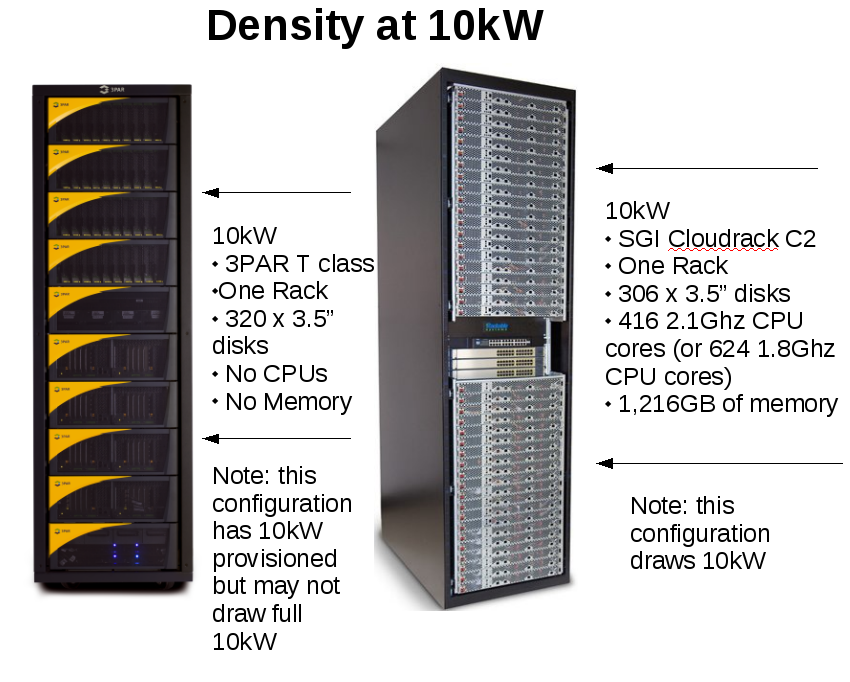[domain name transfer still in progress but at least for now I managed to update the name servers to point to mine so the blog is being directed to the right server now]
Getting closer! Not quite there yet though.
Earlier in the year I was looking at the HP SL6000 series of systems for a project that needed high efficiency and density.
The biggest drawback to the system in my opinion is it wasn’t dense enough, it was no denser than 1U servers for the configuration I was looking at (needing 4×3.5″ drives per system). It was more power efficient though, and hardware serviceability was better.
The limitation was in the chassis, and HP acknowledged this at the time saying they were working on a new and improved version but it wasn’t available at the time. Well looks like they have launched it today, in the form of the SL6500. It seems to deliver(on the statements HP gave to me earlier in the year), I don’t see much info on the chassis itself on their site but looks significantly more dense, with the key here being the chassis is a lot deeper than the original 2U.
But they still have a ways to go, as far as I know the SGI Cloudrack C2 is the density leader in this space, at least from material that is publically available, who knows what the likes of IBM/Dell/HP come up with behind the scenes for special customers.
I did, what was to me a pretty neat comparison earlier this year comparing the power efficiency of the Cloudrack against the 3PAR T-class storage enclosures (granted the density technology behind the 3PAR is 8 years old at this point they haven’t felt the need to go more dense, though HP may encourage them to since they waste up to 10U of space in each of the racks but weight and power can become issues in many facilities going even as dense as 3PAR can go).
Anyways, onto the comparison, this is one place where the picture tells the story, pretty crazy huh? Yeah I know the products are aimed at very diffierent markets, I just thought it was a pretty crazy comparison.
You can think of the Cloudrack as one giant chassis. The rack is the chassis(literally). So while HP has gone from a 2U chassis to a 4U chassis, SGI is waiting for them with a 38U chassis. Another nice advantage of the Cloudrack is you can get true N+1 power (3 diverse power sources), most systems can only support two power sources, the Cloudrack can go much, MUCH higher. And with the power supplies built into the chassis, the servers can benefit from that extra fault tolerance and high efficiency(no fans or power supplies in the servers! Same as the HP SL series)

Comparing directly attached storage to NAS/SAN is just pointless. Any experienced datacenter tech would take NAS/SAN over DAS every day of the week. There are too many modes of failure with DAS. And you have to take the host down to change drives, which you tend to do alot with SGI systems. Although the design is an improvement over the other junk SGI/Rackable has offered, the servers are still not enterprise grade. Not a huge HP fan, but I would never suggest using SGI ever.
Comment by scott s — September 3, 2011 @ 6:26 am
thanks for the post! The point of it was more about density and power usage than functionality. Each system has a radically different purpose.
Comment by Nate — September 3, 2011 @ 7:11 am
[…] I do like HP best of course for the enterprise space – they don’t compete as well in scale out […]
Pingback by HP Storage strategy – some hits, some misses « TechOpsGuys.com — October 20, 2011 @ 9:51 pm
[…] .. There is also fewer systems to manage – HP having 10 systems, and Sea Micro having 4 per rack. I harped on HP's SL-series a while back for similar […]
Pingback by HP Project Moonshot micro servers « TechOpsGuys.com — April 10, 2013 @ 12:11 am